No Results Found
The page you requested could not be found. Try refining your search, or use the navigation above to locate the post.
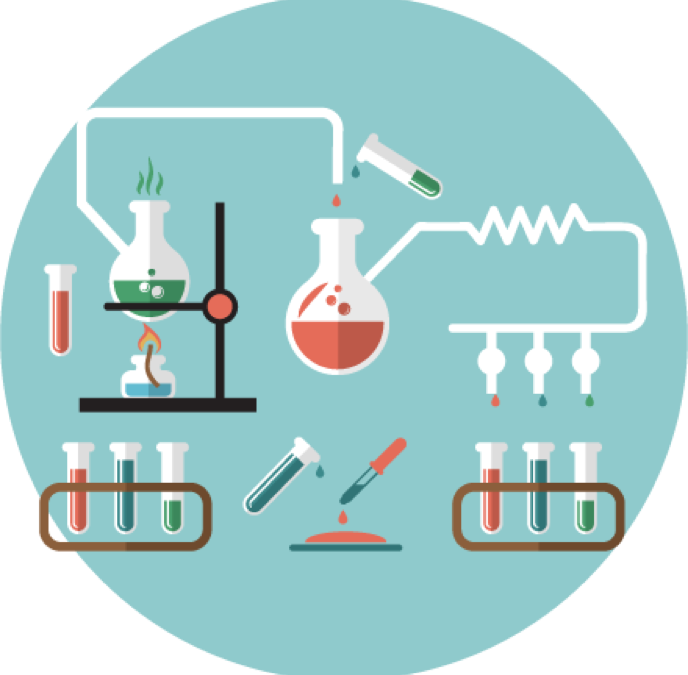
Marketing Automation is the simplest and most effective way to instantly improve lead generation and conversion. Implementing a marketing automation solution will streamline your sales and marketing efforts into one easy-manage process.
By downloading this checklist, you will learn:
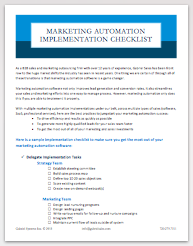
70% of your buyers prefer to learn about your solution through email. And 60% of your buyers are shortlisting with digital education before engaging with sales reps. Success now requires integrated campaigns to produce a cost effective ROI, including:
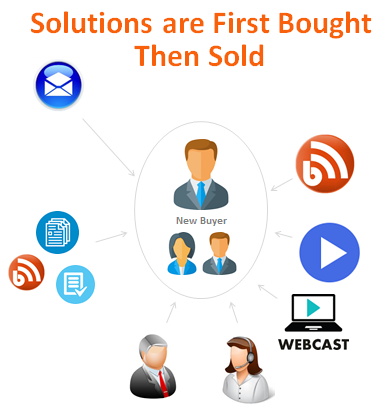
Marketing Automation Systems are quickly becoming standard best practice for sales and marketing success. Here are some recent statistics:
This article will eventually detail why we believe a Sales Ready Lead Campaign is the best way to implement a sales and marketing automation engine for first-time users.
When B2B Marketers were surveyed in 2016, the majority of marketers claimed that Sales Lead Quality was the most important metric to measure success.But, of the 35% of the B2B market that is using a marketing automation platform, 59% state that their systems lack insights that indicate buying behavior. Learn why lead scoring is the key ingredient to sales success. Read More >>>
The entire point of investing in a sales automation engine is to produce more deals and qualified, educated buyers for your sales reps so they stay focused on doing what they do best – closing.
This article will detail how we produce Sales Ready Leads, and at the same time, help you overcome the top risks of building an automation engine that can scale over time.
In our blog post, “Why You Should Consider Sales & Marketing Outsourcing to Generate Sales Ready Leads and to Build Your Sales Automation Engine”, we discussed some of the talent and resource issues that impact getting a sales automation process right the first time.
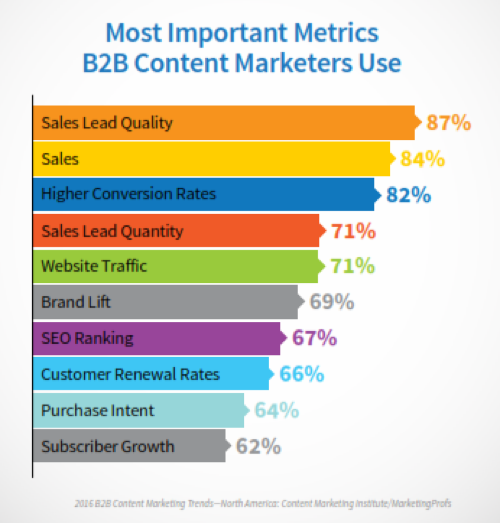
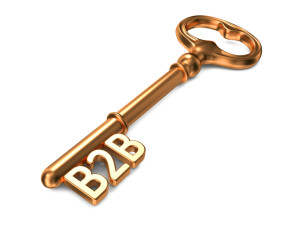
For ten years, email has delivered the highest ROI for marketers over any other form of marketing, returning $44 for every $1 spent. A June 2016 survey of U.S. marketers conducted by the Direct Marketing Association (DMA) and Demand Metric found that email had a median ROI of 122% – more than four times higher than other marketing channels, including social media, direct mail and paid search. (Source: eMarketer, 2016)
What drives the success of email marketing?
A 2017 Marketing Sherpa report revealed, 70% of buyers prefer to learn about a new product or solution by email first, and then prefer to receive additional educational material even after being initially engaged by a business development representative.
And according to a 2016 Hubspot study, email is the third most influential source of information for B2B audiences, behind only colleague recommendations and industry-specific thought leaders.
With these eye-popping numbers, it’s no wonder 59% of B2B marketers say email is their most effective channel in terms of revenue generation.
So, what do these statistics really mean about the state of email and how it should be used?
As part of Gabriel Sales integrated B2B sales and marketing campaigns, we leverage emails at multiple stages of our clients’ sales funnel development program to generate new leads. We also use email marketing to develop buyers not yet ready to purchase, and over time, we use lead scoring tactics to identify which leads become qualified sales opportunities. Subsequently, we do a lot of research, and analyze a lot of our own data.
What the data tells us is, B2B email marketing does not always function in the same way as B2C marketing. B2C is typically focused on direct response and an immediate transaction, as opposed to generating leads and developing them over time. Thus, click-through rates (CTRs) are 47% higher for B2B email campaigns than B2C email campaigns. That being the case, B2B has a slightly different set of best practices.
So, here are our 15 B2B Email Marketing Tips that can help you with improving your B2B sales prospecting campaigns across every stage of your sales funnel development.
Emails are a great way to introduce your solution and make buyers aware you exist. They are also a great way to:
But buyers rarely buy, or immediately schedule an appointment after getting one email from you, so don’t expect overnight success. You will get some quick wins, but this will be a marathon or middle-distance race and not a sprint.
Most B2B companies are not straightforward transactional sales, selling concrete commodities that can be closed in one phone call. But that stated – if your sale is at a low price point and every buyer that shows interest can and should be closed, then lead scoring is not critical. What is critical: you need to call every lead as soon as they show interest, so all you need is the ability to track opens.
FORM GOES HERE
B2B companies these days are implementing marketing automation systems to communicate regularly with potential buyers for product launches, solution education, and to keep their products or services top of mind. And why not, businesses that use marketing automation to nurture prospects see a 451% increase in qualified leads. (The Annuitas Group)
So as businesses shift to automation software, it’s important to keep these statistics in mind:
In this era of content marketing and access to digital education, email is being used for multiple purposes, so it is important that each email has a specific intention. If it’s an initial email lead generation campaign, you may just want to introduce a new solution or highlight a problem you help solve to identify buyers interested in the solution or need that problem solved.
If the goal is to communicate with a buyer you have been developing for a while, and who has opened multiple emails, or has engaged with your content in the past, you may want to ask for an appointment or send them a more specific piece of content to move them deeper into the funnel.
The key is to know what your goal is for every email, and don’t try to do too much at one time in a single email.
In this era of content marketing and access to digital education, email is being used for multiple purposes, so be sure you have a goal for each email. Is it for nurturing? Is it for generating a new lead? Or is it for developing a lead? Knowing the end goal for each message allows you to convey each message more precisely to your audience and often leads to better open rates and click-through results. As a best practice that’s produced great results for us we craft the copy of the email to the specific target audience and offer them the right educational piece according to the content framework below:
Emails are a great way to build awareness and to fill your booth prior to a trade show. But over the past several years, we have discovered that a trade show is a great “artificial” event to also fill your database with a fresh set of leads.
The benefits of trade show audiences is three-fold: first, the average trade show attendee has travelled 400 miles, so your audience is truly national (Source: CEIR report ACRR 1153.12), second, more than 90% of trade show attendees say they are looking for new products (source: Exhibits Survey Inc.), and third, 46% of trade show attendees are in executive or upper management roles (source: CEIR).
We have had great results running campaigns to a rented, opt-in list of potential attendees – not necessarily registered attendees. Sending to this broad list of potential attendees, we have seen the following results:
In 2017, the Apple iPhone leads email client market share with 33% of opens, so design your emails for mobile first. And over the past year, we have seen a rise in senior executives opening early sales pipeline emails on their mobile phones, so this becomes even more important. We became curious about why this was so we asked and the answer was simple: Executives tend to open these emails and check out the educational content offers when they are in between meetings, (in meetings, too, which they loathed to admit) and in the evenings at their kids extracurricular events.
Buyers use smartphones over 60% of the time to view emails. In general, we put too much copy in the subject line, and often bury the point of the email at the end of the subject line. Our research shows, shorter subject lines are opened more often, especially when the point of the email comes first.
Once again, more than 60% of buyers check email on mobile phones, so keep this top of mind when you write your copy. Your emails should be short, easy to read, and broken into paragraphs – no more than three short paragraphs is ideal. You can also use bullets to catch your buyer’s attention and highlight key points.
When we run outsourced sales lead generation campaigns, we run a series of three emails to the same list, as a best practice. We often use the same educational content offer for that three-part campaign, which allows us to perform a comprehensive A/B subject line split test as part of the first effort. We will often test as many as three to four subject lines in the first email, which allows the subsequent email blasts to drill down on the topics most likely to engage the buyer.
Similar to your sales calls, spending too much time talking about yourself or referencing yourself does not get the most effective results. Keep your attention on the buyer, their challenges and their needs. Use your name once or twice. Don’t begin every sentence with your company. Email should not typically be an advertisement.
B2B offers perform best when you offer something of value, so lead with an educational offer. Emails are the preferred way buyers wish to learn about new solutions, so attach a link to a valuable blog article, white paper or video that talks about the solution and not a product pitch. When buyers get a link with an interesting asset, they are more likely to save it and/or share it.
At later stages of pipeline development, once a buyer has some familiarity with your solution, it will make sense to talk about yourself. When you do, use a case study as an example of a key success. This allows a buyer to understand how your solution has helped solve problems for customers like them, and helps them start to visualize and consider how your solution can help them solve a similar problem.
With the adoption of marketing automation tools, data merge fields are now the norm. It’s not acceptable not to personalize, so use the prospect’s first name in the email. You can also include the company name if it makes sense, however, only do this if you have a database you know is accurate. By doing so, your email stands out.
For most companies this is all the personalization you need. Personalizing email campaigns with different content offers, color schemes, etc. is not typically worth the effort unless you have database segments over 10,000 plus. If you do need to personalize, and deal sizes support this level of investment, it probably makes sense for your sales rep to manage this directly.
Your email should always have a clear call to action. When we run an outsourced sales campaign, it should be as specific as possible and require the least amount of effort from your prospect. For example, briefly describe the value of the educational content and clearly display the link to it, or give them a day/time for a 10-minute call to discuss the value you can provide to their business. If you have a calendar app, such as Calendly, use it to let prospects set up their own meeting with you.
Gabriel Sales specializes in helping B2B companies build modern sales and marketing operations.
We do this for companies with a wide variety of technology, service businesses and manufacturers that have a non-transactional solution based sales process. What this means is, to close the sale, you must build trust with the buyer, which typically requires a thought leader, consultant, sales engineer or demonstration of the product to engage the buyer and close business
Email marketing is just one piece of what we do. We can also help with strategy, automation systems implementation and other tactics required for demand generation.
Feel free to contact us to schedule some time to discuss how Gabriel Sales can help you grow your business.

A publicly traded company, Imaginatik, was founded in 1996, and sells a mix of consulting and advisory services, hands-on innovation projects, program management, and award-winning enterprise software globally. Company’s U.S. office was comprised of a team of high-end enterprise sales executives, executives and consultants with domain expertise, and a marketing director.
Company wanted to move beyond its reliance on rolodex reps to generate its sales pipe and reduce its 18-month sales cycle. Because of their limited bandwidth, they felt an outsourced sales and marketing solution made sense.
Over an 18-month period, we worked with Imaginatik on Marketing Automation and Content Management Systems Integration, Targeting, Lead Generation Campaigns, and Outsourced Sales and Marketing Execution for Opportunity Development.
Gabriel Sales moved to outsourced sales project work.
The page you requested could not be found. Try refining your search, or use the navigation above to locate the post.
Time is money. Your buyer now expects you to make your content relevant and available so that they can educate themselves, digitally. They expect you to service them early in their buying process, not just put them in front of hard charging closers. You need marketing and sales talent with experience and expertise to integrate content and sales professionals seamlessly.
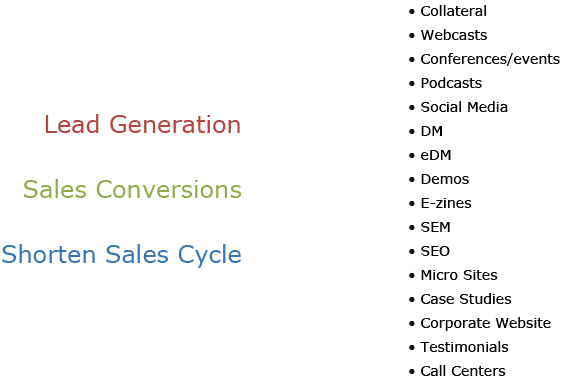
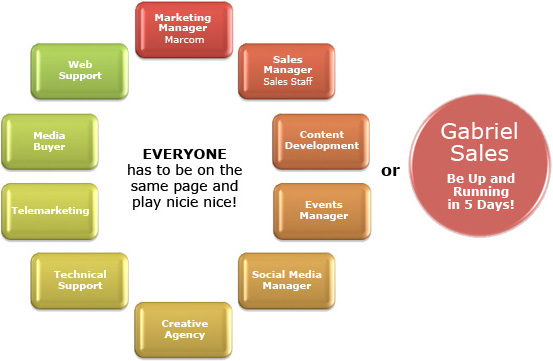
We know that creating content to keep up with the demands of your buyers is often hard to get off the ground. Experienced creative talent that specializes in the needs of fueling automation engines is difficult to find. We add specialized talent to your existing team immediately.
Today’s marketing departments are increasingly technology-powered. We have experienced this ourselves and are experts in these various analytics programs, marketing automation and salesforce automation platforms. This allows us to work with what you have in place, or we can help you build best practices from scratch.
Simply throwing bodies at the problem and generating more leads won’t solve the problem. We have well trained reps that understand how to use the automation tools to identify the hottest opportunities and buyer education reps that understand the nuances and desires of the new buyers.
We know that the right team with the right skills will provide you with better data and robust quantitative & qualitative analysis. This is an essential step that’s required to quickly make this challenging market shift and automate as much of your sales and marketing process as possible without losing sales… or your shirt!
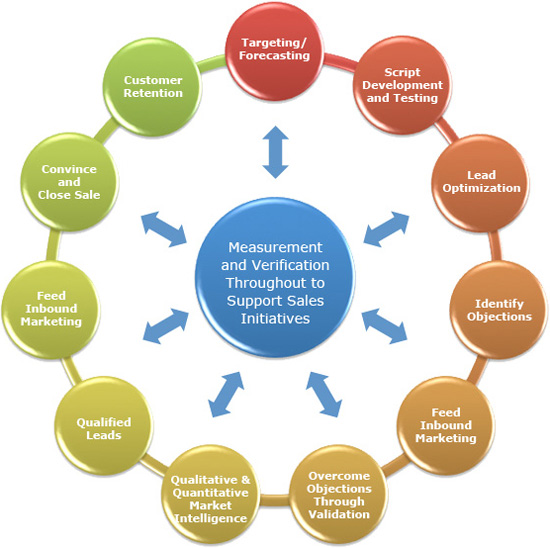
Why are Marketing Metrics so important for success? Athletes have known the answer for years. Quite simply, you can’t improve what you don’t measure. This is why of the six teams leading early in the 2017 MLB season, five are advocates of the data-driven systems advocated in Michael Lewis’s, Moneyball.
Over the past ten years, we have seen data transform the way businesses are run – and sales and marketing are no different. You can use data to help you to improve what is working, remove what is not working, and make smarter business decisions in the future. Capturing this data is one of the key drivers of the recent adoption of CRMs like Salesforce.com, and Marketing Automation Systems. It’s also why working with an outsourced sales company may be a smart move for many companies because they can help them capture key outsourced sales and marketing metrics.
So how does all this impact your business? In sales, like sports, consistent wins don’t happen by accident. Repeatable results are driven by repeatable math—numbers that define your sales team’s past performance will predict future performance.
Here are the key outsourced sales and marketing metrics you can expect from an outsourced sales company.
The first key metric an outsourced sales and marketing company can help with is, how much outbound activity does it take to generate a lead. An outsourced sales company will measure the results of every call and track the connection ratios (how many calls does it take to get a person on the phone). Your outsourced sales reps will also track how many calls result in someone that is mildly interested in your solution, and willing to accept Marketing Material (Marketing Qualified Lead – MQL), and how many buyers have a potential need for your product (Sales Accepted Lead – SAL)
In most cases, cold calling alone may not be the most effective way to generate leads and you will understand these metrics clearly. Below is a chart of the cold calling metrics you can expect from an outsourced sales company.
Marketing Sherpa found, 70 percent of buyers now prefer to learn about new products and services from email first. For about the cost of a cold caller for one month, you can now make 25,000 to 75,000 potential buyers and influencers aware of your solution. What is important from a data perspective is, you can also test up to nine different messages as part of these campaigns. The key outsourced sales and marketing metrics in this case will be:
This information can help you to determine:
Building a consistent flow of leads is the most critical first step in scaling a sales effort. But if you’re over spending or underspending on your lead generation efforts, you will not be keeping your closers’ (your most expensive sale cost) time maximized. A scorecard will tell you:
Gabriel Sales Provides outsourced sales and marketing metrics
Gabriel Sales specializes in helping SMBs and Start-ups launch modern sales and marketing operations. As part of building, launching, and executing sales campaigns to fill your closers sales funnel, we provide key outsourced sales and marketing metrics. To learn more about our outsourced sales and marketing services we invite you to visit our outsource sales and marketing services page.